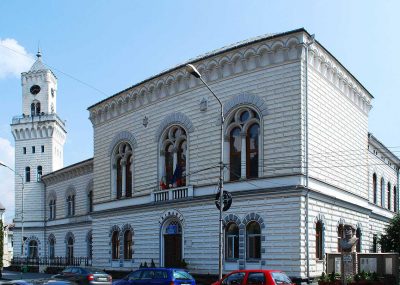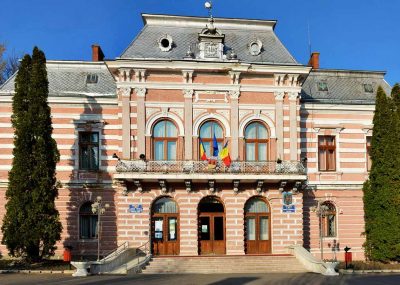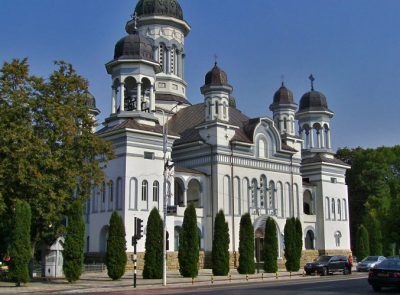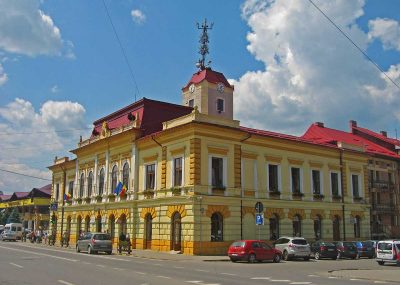If we have a few terms to describe Bucovina, then popular art, brightly colored monasteries and churches, tradition and history stand out, representing the pure Romanian soul. We can be very confident that the hospitality and culinary talent of people that live in this region will delight and convince you to spend a few days in this fairytale place.
This region is located in northeastern Romania and borders Ukraine to the north, Maramureș to the west, Moldova to the east, and Transylvania to the south.
As you set foot in the enchanting land of Bucovina, you will immediately be captivated by the rich linguistic and ethnic tapestry that unfolds before you. Within this region, you will encounter vibrant communities coexisting with Romanians, including Ukrainians, Poles, Russians, Hungarians, Lipovans, Ruthenians, and Roma. This harmonious blend of cultures has given rise to a kaleidoscope of customs, traditions, and distinctive folk costumes that are unique to the area. Each community contributes its own rich heritage, contributing to the cultural mosaic that makes Bucovina a truly captivating destination.
The diverse topography of Bucovina encompasses mountains, valleys, hills, plateaus, plains, and meadows, creating a captivating landscape that entices visitors. Within the mountainous region, you’ll find notable features such as the Suhard Mountains, Obcinele Bucovinei (Mestecăni, Feredeu, Mare), the Giumalău and Rarău massifs, and the Sutra Mountain. Reaching an impressive elevation of 1856 meters, Giumalău proudly claims the title of the highest peak in Bucovina.
One mustn’t overlook the remarkable Călimani National Park, a protected area spanning across multiple counties including Mureș, Suceava, Harghita, and Bistrița-Năsăud. This extraordinary location offers unparalleled opportunities for visitors, from traversing scenic mountain trails to delving into the intricate diversity of its fauna and flora. In the southwestern part of Suceava County, approximately 25 kilometers away from Vatra Dornei, lies the section belonging to Bucovina.
The region’s relief and climate lend themselves to agriculture and animal husbandry, with common crops including corn, wheat, sunflower, and various cereals thriving in the fertile soil. This harmonious relationship between the land and its inhabitants has shaped the agricultural landscape of Bucovina, further enriching its cultural tapestry.
Suceava is undoubtedly one of the most beautiful cities in Bucovina. Among all that it has to offer, don’t miss out on these highlights: the Suceava Fortress, the Șcheia Fortress, and the Bucovina Village Museum.
It is famous for its rich history and impressive cultural heritage. The city was the former capital of the region and still preserves numerous remnants of its glorious past.
Suceava also houses a number of Orthodox churches, with the Church of St. George standing out among them. This impressive religious building, with its colourful frescoes and unique architecture, is a testament to the region’s rich religious legacy.

Vatra Dornei is a charming city located in northern Romania, in the region of Bucovina. Known as the “Pearl of the Carpathians“, Vatra Dornei is a popular destination for nature lovers and those seeking relaxation and wellness treatments.
It attracts tourists, in part, due to its mineral and thermal waters that offer a wide range of treatments and relaxation activities. Visitors can immerse themselves in thermal pools, enjoy therapeutic massages, and take advantage of the healing benefits of local spas.
Here, you will also witness unparalleled landscapes, which can be further appreciated through mountain trails. The area is also famous for its ski slopes, bustling with tourism during the winter sports season.

Fălticeni is a city located in the region of Bucovina and is known for its natural beauty and tranquil atmosphere. The city is surrounded by beautiful mountain landscapes, making it a paradise for nature lovers. Its picturesque forests and winding trails invite visitors to explore and enjoy hiking and outdoor excursions.
It also boasts a rich history and remarkable cultural heritage. One of the main attractions is the Church of St. John the Baptist, an impressive Gothic-style religious building dating back to the 19th century. Its beautiful architecture and decorative details captivate visitors.
If you make a stop during your journey, you can also visit the Gallery of the People or the Water Museum, where you can further immerse yourself in the local culture and history.

Rădăuți is known for its rich historical heritage. One of the prominent landmarks is the Mihai Eminescu Castle, a beautiful Gothic-style mansion that used to be the residence of Romania’s national poet, Mihai Eminescu. The castle now houses a museum displaying personal belongings of the poet and offers a fascinating insight into his life and work.
The city is also renowned for its skilled artisans. You can witness their craftsmanship firsthand at the Colibaba Ceramics Workshop, as well as at the “Samuil and Eugenia Ioneț” Ethnography Museum. The Grand Temple, and the horse stable are other points of interest for tourists.
Surrounded by mountains and valleys, the city is an ideal destination for outdoor enthusiasts. From mountain excursions to cycling and hiking along natural trails, Rădăuți offers numerous opportunities to enjoy the region’s natural beauty.

Gura Humorului is rich in traditions, folk art, and places of worship that exude a special beauty. To these elements, another attractive ingredient is added: its ski slopes.
Gura Humorului is famous for its painted monasteries, declared UNESCO World Heritage sites. The Humor Monastery and the Voroneț Monastery are two outstanding examples of this unique cultural heritage. These architectural gems from the 15th century feature vibrant and colorful frescoes depicting biblical scenes and religious narratives, which have withstood the test of time and continue to be impressive to this day.
The city is also known for its traditional festivals, which celebrate music, dance, and local customs. The Romanian Folk Song Festival and the Folklore Festival are prominent events that attract artists and visitors from across the country.

Suceava Citadel: Explore the historic Suceava Citadel, an impressive medieval fortress that served as the seat of Moldavia’s ruling princes. Climb the towers, walk along the fortified walls, and immerse yourself in the rich history of the region.
Bucovina Village Museum: Visit the Bucovina Village Museum in Suceava, where you can explore a collection of traditional wooden houses, authentic household items, and learn about the local customs and rural life of the region.
Cacica Salt Mine: Descend into the underground world of Cacica Salt Mine, located near Gura Humorului. Explore the unique salt formations, learn about the history of salt mining, and enjoy therapeutic treatments in the salt chambers.
Museums (Hanul Domnesc Ethnographic Museum, Bucovina’s Museum, Museum of Popular Customs, Wood Museum) – you will find a multitude of this type of objectives in this region. They are true representations of the Bucovina people’s identity.
Călimani National Park: Discover the natural beauty of Călimani National Park, which spans several counties in Bucovina. This protected area is home to diverse flora and fauna, and offers opportunities for hiking, wildlife spotting, and enjoying the picturesque landscapes.
Vatra Dornei Resort offers recreational opportunities for all winter sports enthusiasts and those who want to benefit from a variety of therapies: internal / external treatments of water from mineral springs, mud baths, or hydrotherapy.
These are just a few of the many attractions Bucovina has to offer. The region is rich in natural beauty, cultural heritage, and unique experiences for visitors to enjoy.